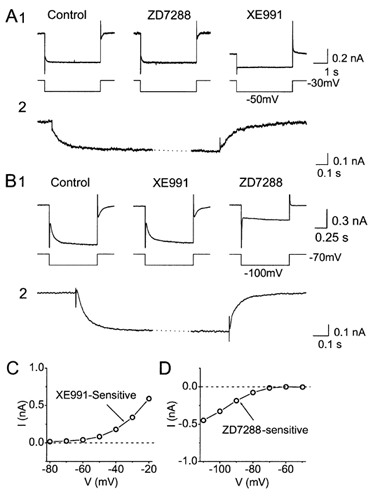Figure 4. Selective elimination of M-current (IM) and H-current (Ih) by the ion channel blockers XE991 and ZD7288.

Whole-cell voltage-clamp recordings from CA1 pyramidal cells bathed in 1 μm TTX to block Na+ channels. A1, typical example showing that XE991, but not ZD7288, blocked IM. IM was recorded by giving 4 s-long -20 mV voltage-clamp steps to -50 mV from a holding potential of -30 mV. M-channel closure was seen as a slow inward relaxation (tail current) after stepping to -50 mV, and M-channel reopening as a slow outward relaxation after stepping back to -30 mV. Bath application of 10 μm ZD7288 had no detectible effect, whereas subsequent application of 10 μm XE911 fully blocked IM, abolishing the relaxations and causing an inward shift of the holding current. A2, the XE991-sensitive current, calculated by subtracting the current traces before and after XE991, at an expanded time scale. Note the larger instantaneous jump in the current when stepping from -30 to -50 mV (when most M-channels are open), compared to stepping from -50 to -30 mV (when most M-channels are closed). The example shown in A2 is taken form a different cell than A1 because an A-current evoked by the step to -30 mV partly masked the time course of M-current opening in A1. B1, ZD7288, but not XE991, blocked Ih. The cell was maintained at -70 mV, and stepped to -100 mV for 1 s. Ih activation and deactivation were seen as slow inward and outward relaxations at the beginning and end of the step, respectively. Ih was highly resistant to 10 μm XE991, but was fully blocked by subsequent application of 10 μm ZD7288. B2, the ZD7288-sensitive current, calculated by subtracting the current traces before and after ZD7288, shown at an expanded time scale. C, XE991-sensitive difference current amplitude, obtained by subtraction of currents before and after the application of 10 μm XE991, plotted as a function of membrane potential (V). D, ZD7288-sensitive difference current amplitude, obtained by subtraction of currents before and after the application of 10 μm ZD7288, plotted as a function of membrane potential (V). In C and D, the difference currents were measured at the end of the negative-going voltage step (cf. panels A2 and B2). TTX (1 μm) was applied throughout all experiments (A-D) to block Na+ channels.
